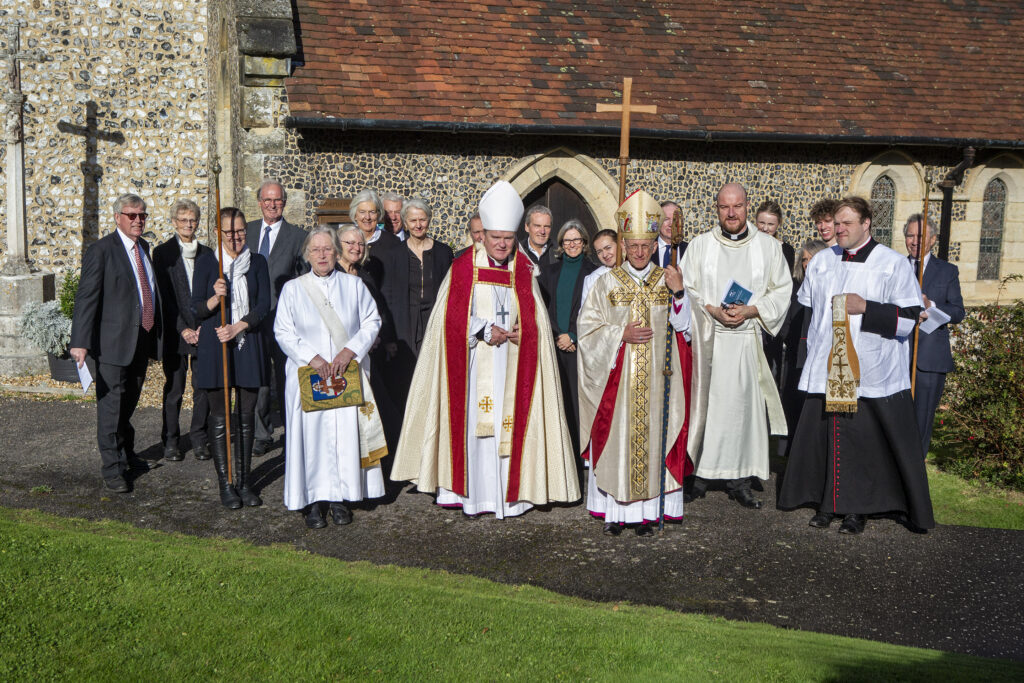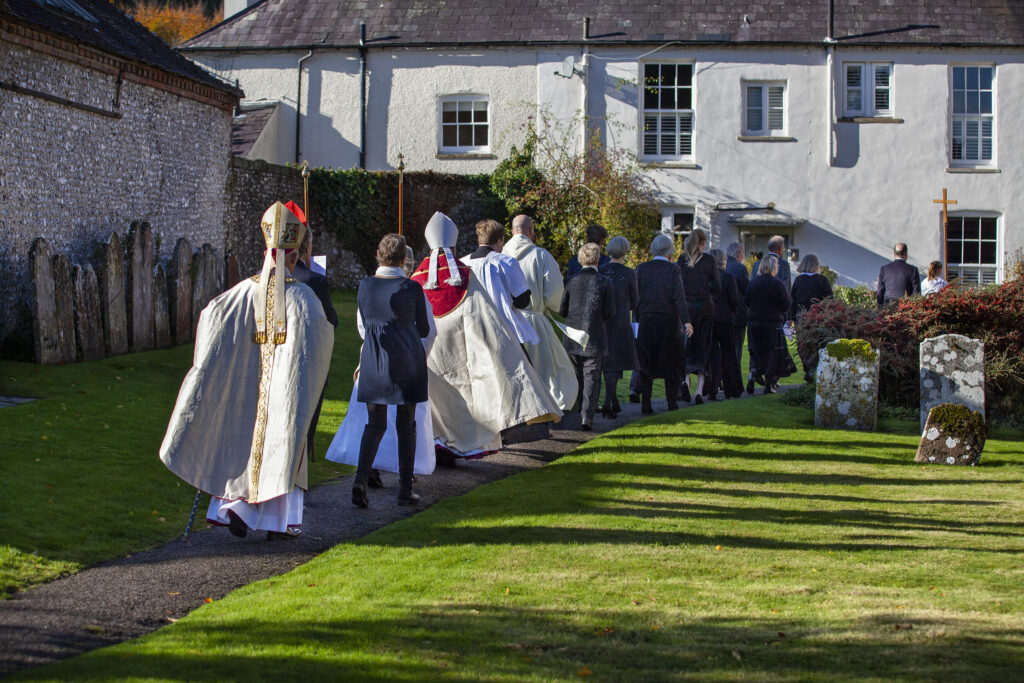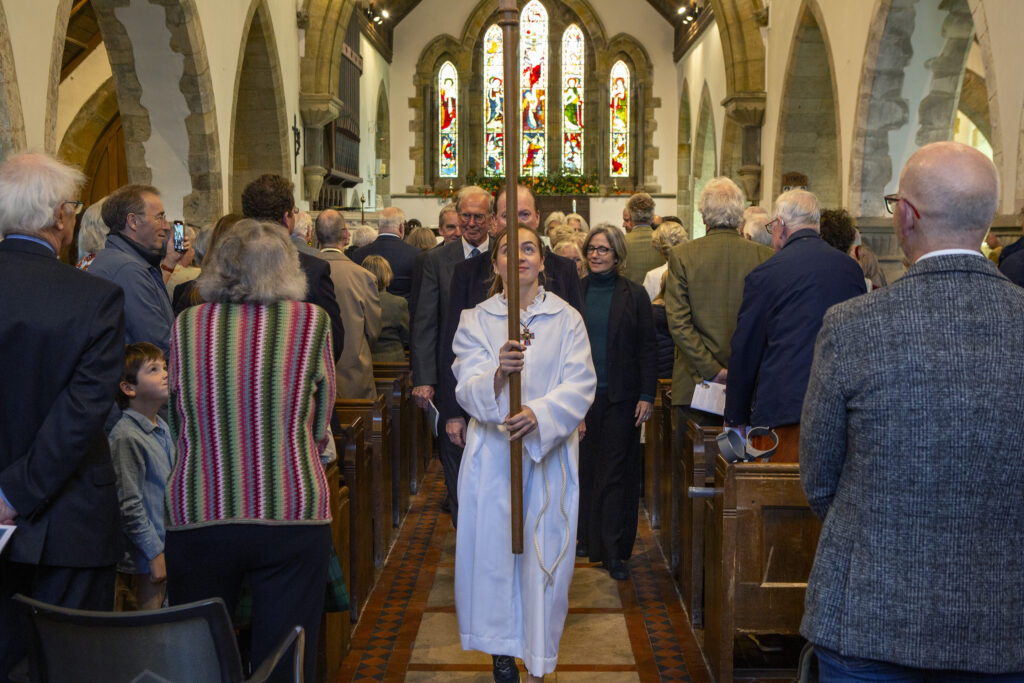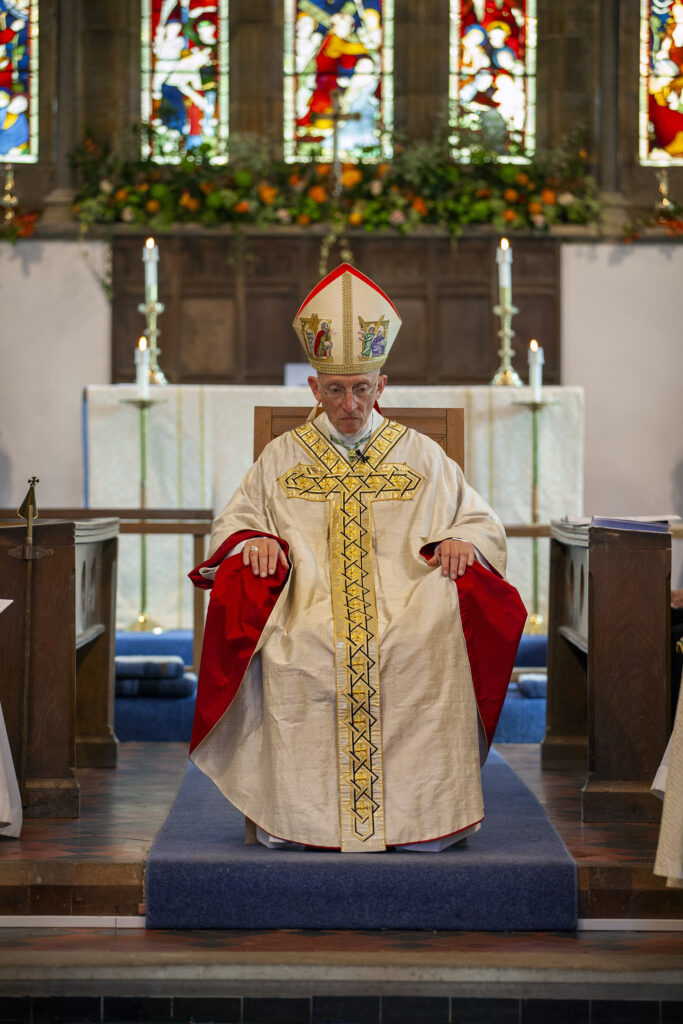On All Saints Sunday 2 November 2025, the Parish of Graffham with Woolavington celebrated the 150th anniversary of the rededication of its St Giles Church following its rebuilding in memory of the village’s one-time Lord of the Manor, the noted Victorian cleric Bishop Samuel Wilberforce.
To see the full photo album of this historic day for St Giles Church, click here.
The rededication service in 1875 was attended by the Archbishop of Canterbury of the time himself, the first Scot to hold the post Archibald Campbell Tait, and no less than four bishops – of Chichester, Ely, Rochester and Winchester – along with around 75 other clerics, and the choir of St Giles supplemented by choristers from Chichester Cathedral. So many of the great and good from across the land joined the event that a special train was chartered to carry them from London Victoria to the then nearest station to Graffham, the long since closed Selham.
While 2025’s rematch could not equal the number of men in resplendent robes, our weather outshone that of 150 years ago. Back then, the heavens opened, bucketing with non-stop rain. This All Saints Day, Graffham was blessed with the best golden sunshine, matching the autumnal hues of its downland trees.
So those leading the 10.30am service were able to process in their fine attire from Graffham CofE Infant School across the road to St Giles’ ancient west door under a brilliant blue sky.
They included two bishops – the Rt Rev Martin Warner of Chichester, carrying Bishop Wilberforce’s own crozier, which has remained since his death in Woolavington’s St Peter’s Church (which is now the chapel of Seaford College), and Bishop Humphrey Southern, principal of Ripon College Cuddesdon, the leading theological college founded by Bishop Wilberforce.
Joining them were the Ven Dr Tom Carpenter, making his first visit to Graffham since being appointed Archdeacon of Chichester earlier this autumn, the Rev Colin Datchler, Seaford College’s chaplain, and Graffham with Woolavington’s priest-in-charge the Rev Vivien Turner, along with St Giles’ churchwardens, church choir and crucifer.
Sprinkled discretely through the congregation of, appropriately, some 150 were a number of direct descendants of Bishop Wilberforce.
St Giles was looking at its best. Replastering and repainting of the west walls had been completed a week or so before. The flower team had pulled out all the stops with beautifully arranged blooms on every surface. Making its first appearance on the folding lectern was a spectacularly stitched frontal, made by Parochial Church Council Secretary Liz Jenkins and St Giles regular Jane Pine-Coffin.
The congregation further raised the roof with The Church’s One Foundation, just as they had 150 years before, and the Sussex hymn Jerusalem. In four-part harmony, the choir sang Howard Goodall’s arrangement of The Lord is My Shepherd, better known to some as the theme tune of the TV comedy The Vicar of Dibley (any similarities between Dibley and Graffham is, of course, purely co-incidental). Seaford College alumni sang a number of airs.
The Rt Hon Andrew Griffith, MP for Arundel and South Downs, read from St Paul’s letter to the Ephesians.
Inviting the congregation to donate to the church and its ministry before leaving the building, the Rev Vivien raised a chortle while noting that the collection at the dedication service 150 years ago raised £61 – worth almost £9,000 at today’s values.
Then it was back across the road, to Graffham CofE Infant School’s hall for a reception, with fizz sponsored by a parishioner and canapes courtesy of village restaurant The Woodcote. On display there were panels outlining St Giles’ history, along with a life-size copy of the 1597 estate map of Graffham and drawings by the school’s children depicting the church’s 150th anniversary.
It was also a first chance to buy copies of a book of recipes from Graffham residents produced specifically to mark the occasion – with almost 100 of them snapped up in little more than an hour – and tea towels created as a momento of the landmark too.
Bishop Wilberforce became Graffham’s Lord of the Manor through his marriage to Emily Sargent, eldest surviving daughter of John Sargent, the rector of the then separate parishes of Graffham and Woolavington. Sargent was succeeded in his ecclesiastical role by another of his sons-in-law, Henry Manning, who would later convert to Roman Catholicism and become prelate of England as Archbishop of Westminster.
Bishop Wilberforce, who was the son of the anti-slavery campaigner William, died, aged 67, in 1873 when he fell from a horse in the Surrey Hills while visiting his friend William Gladstone, Prime Minister at the time.
His friends and family raised a considerable sum towards memorials in his honour. From this, £2,885 – equivalent to around £400,000 at today’s values – was allocated to expanding and renovating Graffham’s St Giles. G E Street, who served under Wilberforce as architect to the diocese of Oxford, was appointed to draw up the design. Although he specialised in churches, he is best known for London’s Royal Courts of Justice.
Street aimed to maintain the building’s original medieval appearance, so he retained the late 12th Century two-bay arcades and their pillars, but extended the nave to the east and built a new chancel, vestry and, as it is today, a lady chapel. Many of the Norman and Tudor doorways and fittings were carefully retained and repositioned. Stained glass for the windows was supplied by the prolific London firm of Clayton and Bell, whose other commissions include the west window of King’s College Chapel in Cambridge, London’s Albert Memorial and Westminster Cathedral.
You can read more about the history of Graffham’s St Giles Church, its connections with the Wilberforce family and the service that marked its rededication back in 1873 in a series of features from Graffham Parish News available at bit.ly/stgiles-history






